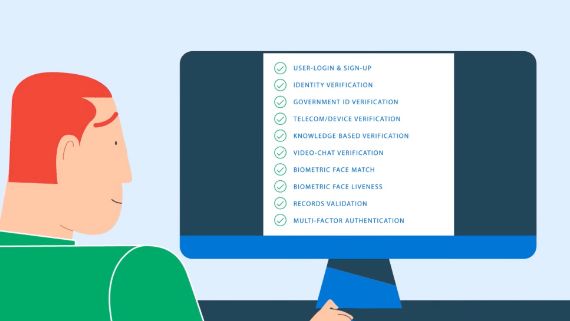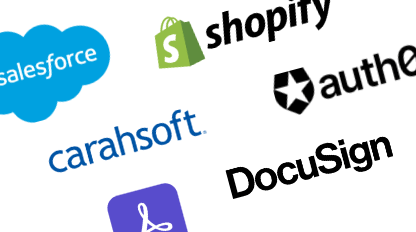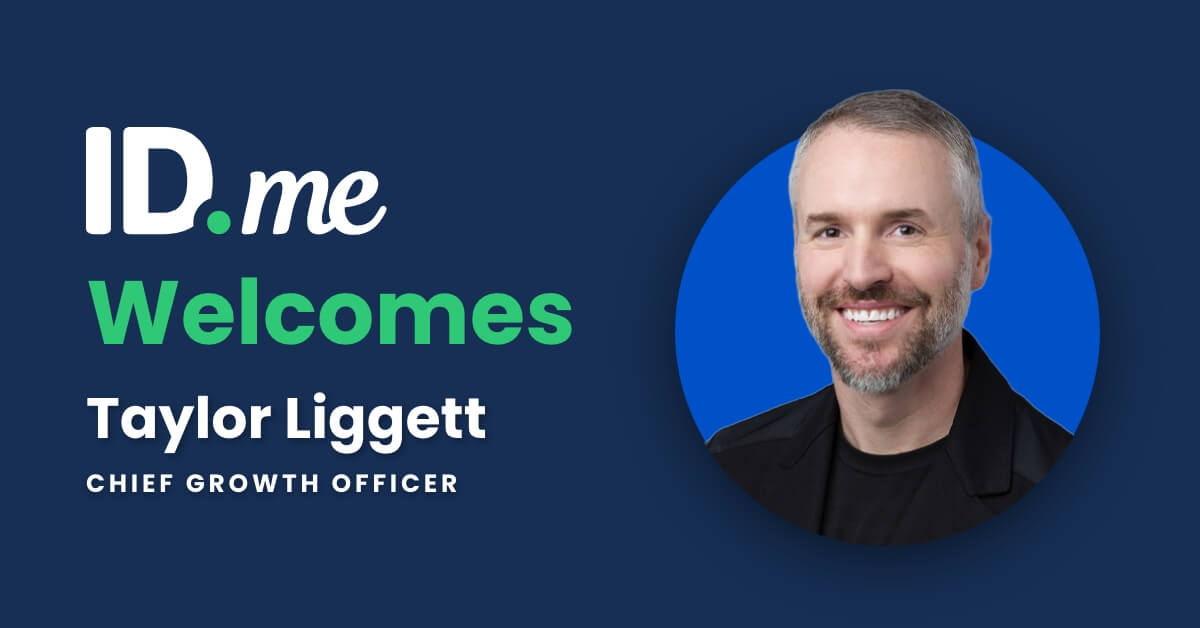Revolutionizing User Experience: Turning Identity Verification into a Frictionless Login Experience

The ID.me shared services approach and pre-verified network is rapidly transforming the identity proofing and credentialing process into a frictionless login experience. ID.me streamlines login and allows users to bring their verified identity with them.
At ID.me, our mission is to make the world a more trusted place by delivering the highest level of security with the least friction and the lowest possible cost. Our two-step approach enables users who verify their identity and secure it with multi-factor authentication (MFA) to use it anywhere the ID.me button is present, creating a trusted and portable identity credential. Over fifty million pre-verified users already benefit from this “digital fast lane” that grants swift access to essential benefits and services, eliminating the need for multiple passwords.
The pre-verified “digital fast lane” translates to massive user experience gains: pre-verified users see a 99.5%+ pass rate and can prove their identity to a new site in less than 60 seconds. Users enjoy this frictionless experience at 15 federal agencies and 40 agencies across 30 states.
Further, ID.me users are empowered to choose their preferred verification pathway. Our omnichannel approach allows users to select the best pathway, extending identity verification options to millions of Americans with limited or no credit profiles.
With ID.me, a user verifies once anywhere and gets frictionless access everywhere.
Our portable credential is locking in inclusion gains
As we increase the population of users with pre-verified identities, we increase access and inclusion across our network through our two-step approach:
1: Industry-leading success rates for first-time verifications
Because we offer multiple verification pathways, more users can successfully verify their identity. To date, ID.me has verified 8.4 million users through our video chat pathway. ID.me’s video chat pathway has been shown to close about 75% of the digital divide created by credit bureaus and data brokers, which frequently fail to verify individuals who lack a credit history or other documentation.
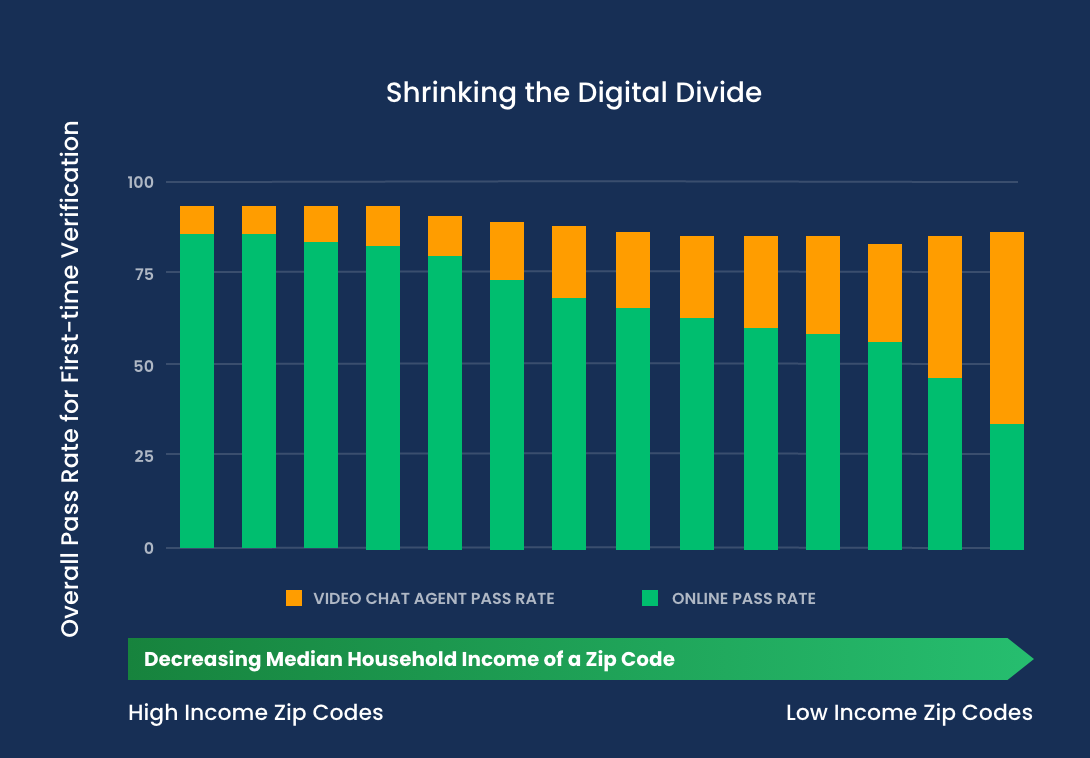
2: Lock in inclusion gains by making credentials portable
When organizations partner with ID.me, we minimize the need for their constituents to create and manage separate logins to access services and benefits. In the state of California, for example, there are 9.2 million users who have already verified their identity with ID.me. Without ID.me’s portable wallet, these users would have to re-verify their identity at each new organization they engaged with, increasing the risk of fraud.
Consider the journey of fictional user Jane Smith. Last year, she verified her identity with ID.me to access her tax transcripts at the IRS. Now, facing the need to apply for benefits and services online after losing her job, Jane can use her ID.me login to confirm her identity swiftly, streamlining the process for accessing unemployment benefits and Medicaid.
The identity credential’s portability removes friction for users while protecting inclusion gains.
Enhancing user experience: pre-verification on the rise
In Q4 2023, ID.me issued 5.9 million new NIST Identity Assurance Level 2 (IAL2) subscriptions. A subscription is generated when a user accesses an organization for the first time or when a user renews their annual subscription. 55% of users—3.3 million—could prove their identity simply by logging in.
The increasing rate of pre-verified users continues to simplify the login process for all users. Our fifty million-plus pre-verified users see a 99.5%+ pass rate and are able to prove their identity to a new site in less than 60 seconds in just three easy steps: sign in, complete MFA, and provide consent.

Omnichannel approach = more users getting verified
At ID.me, we remain committed to elevating the customer experience and fostering digital inclusion. Our omnichannel, NIST-compliant solution offers diverse pathways to access essential benefits and services seamlessly.
For new users seeking to prove their identity for the first time, we offer three distinct pathways: self-service, video chat, and in-person verification. Users who verified for the first time using self-service—88% of users in Q4 2023—experienced virtually no wait.
For users who are unable to use the self-service pathway, such as those who are located internationally or have no accessible credit history, ID.me is the sole provider offering a video chat pathway. These users still benefit from a streamlined pathway to access—the median wait time for the 12% of new users who verified using our video chat pathway was six minutes in Q4 2023. Without this video chat pathway—exclusive to ID.me—these users would have no options for remote identity verification.
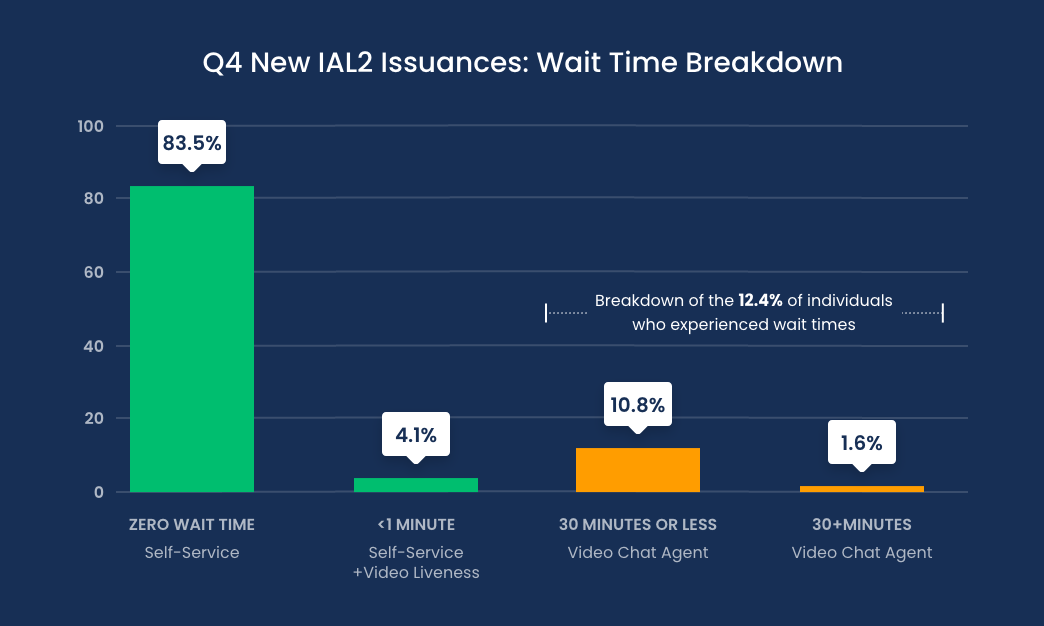
Lastly, ID.me offers in-person verification for individuals lacking a mobile device, dedicated internet access, or strong digital skills. With 720+ retail locations offering verification services, an individual can be verified within their community, guided by a trained technician. While only <1% of ID.me users choose this option, users attest to the quick and user-friendly nature of the process.
Our commitment to providing a secure, user-centric verification experience remains unwavering as we grow and expand our services. By offering a portable credential accessible through an omnichannel approach, we’re creating a digital environment where tens of millions of pre-verified users are accessing essential benefits and services without friction.
